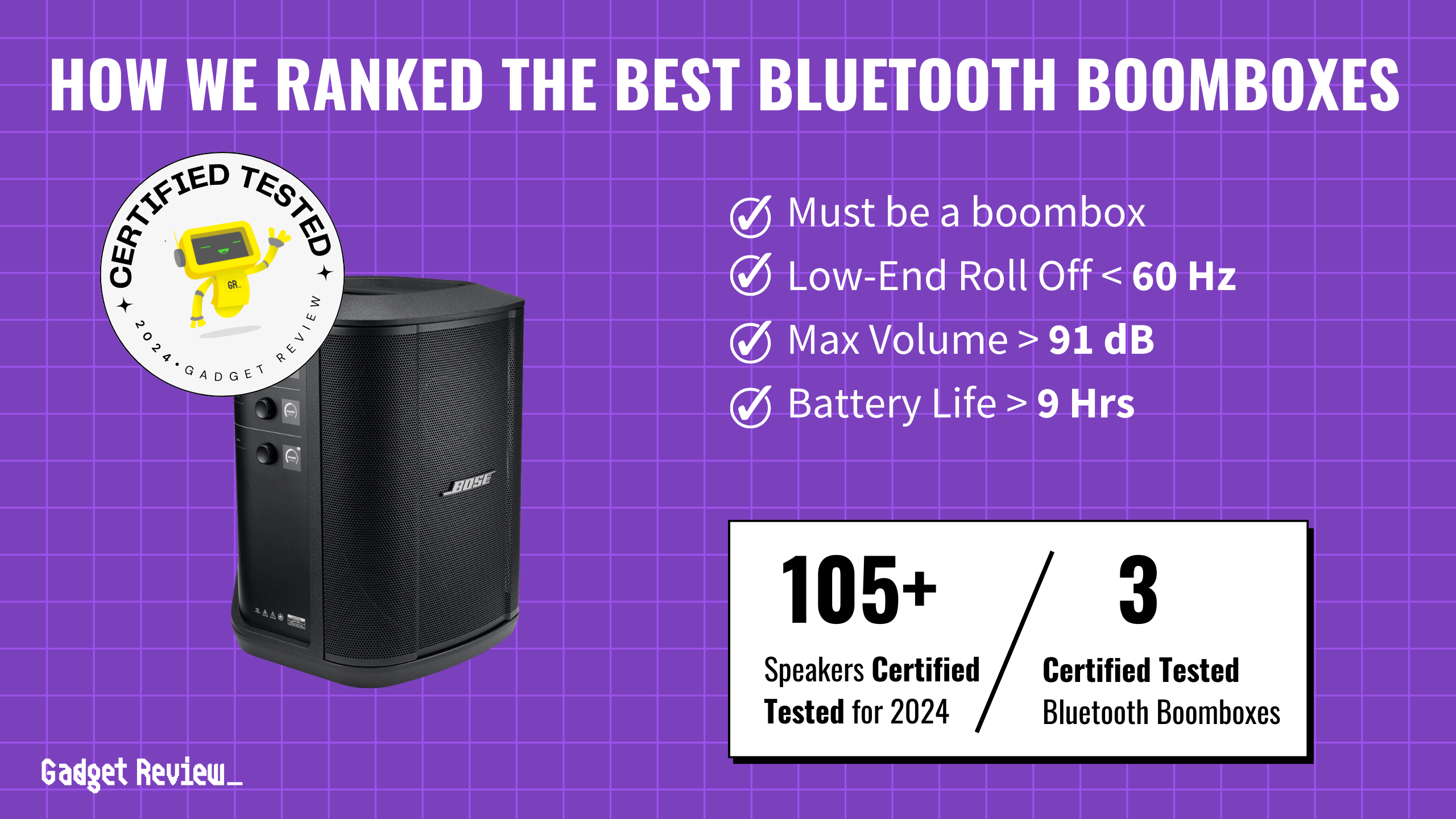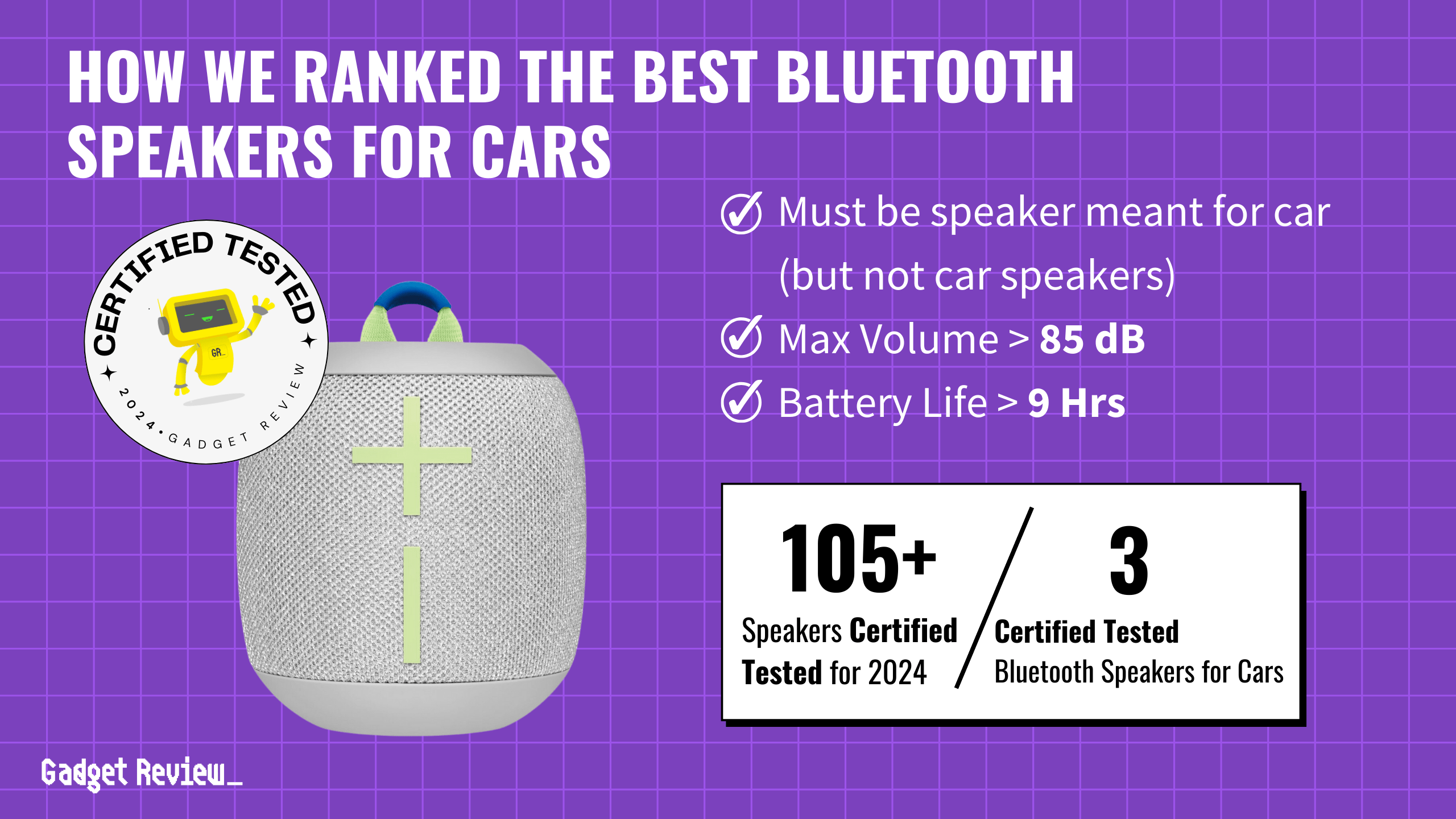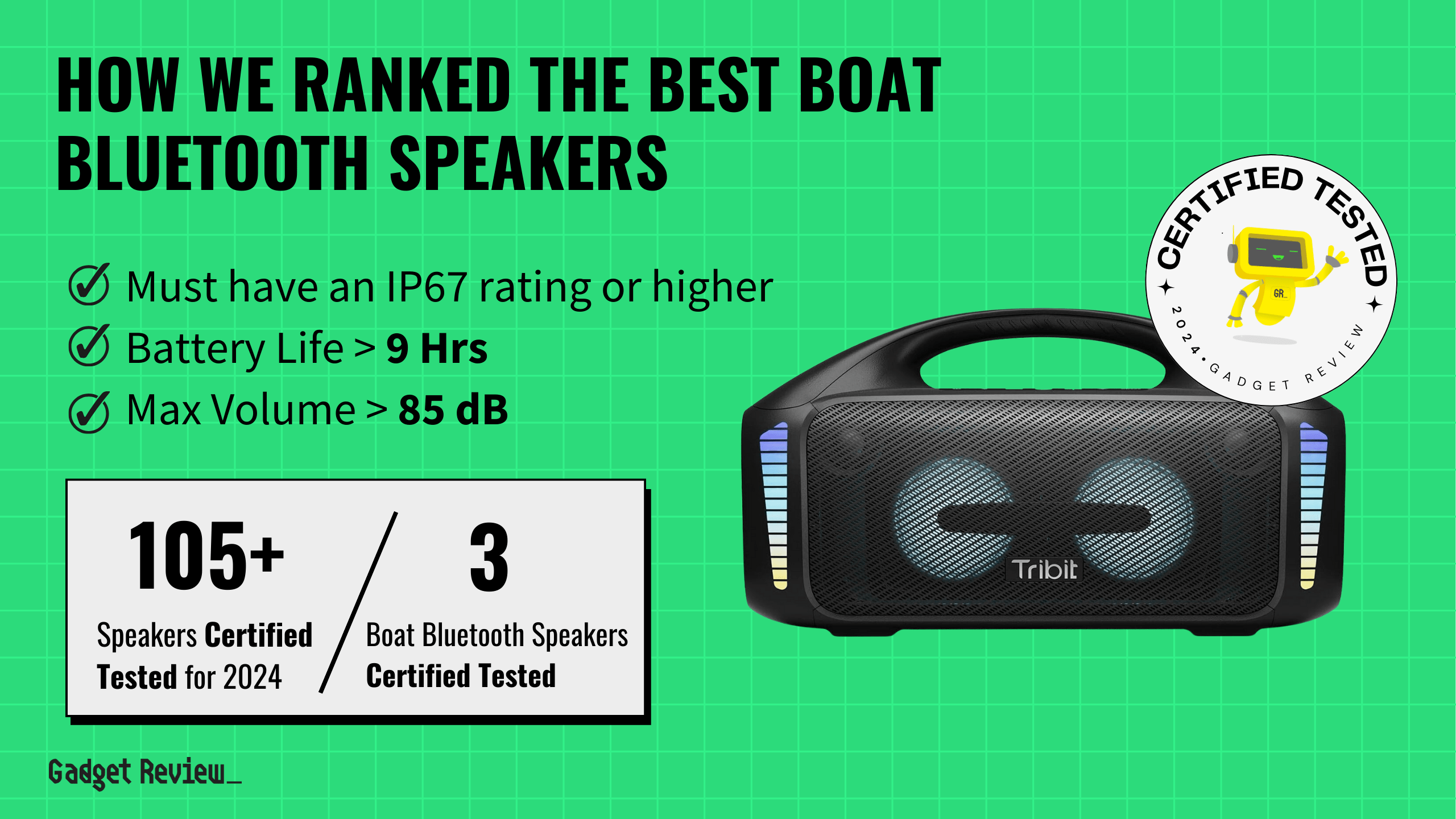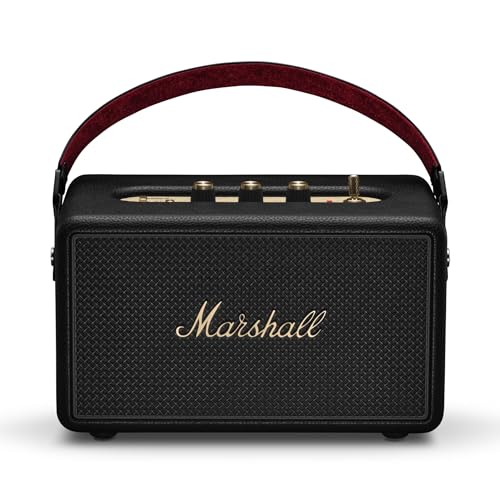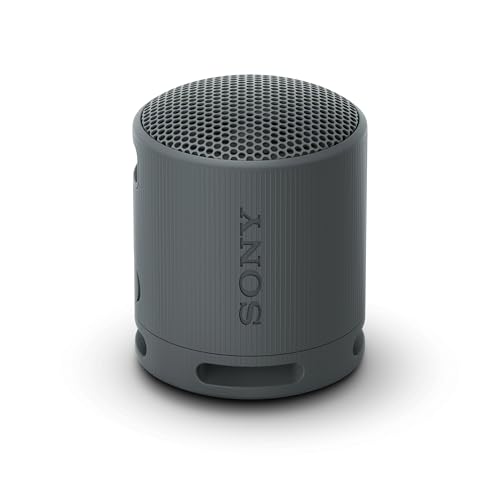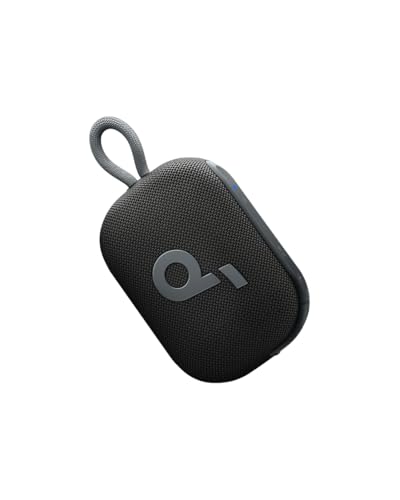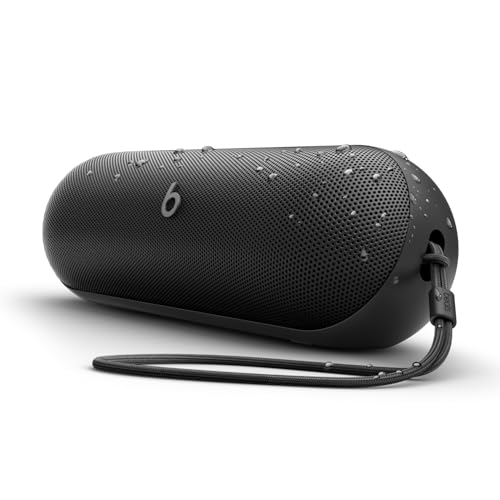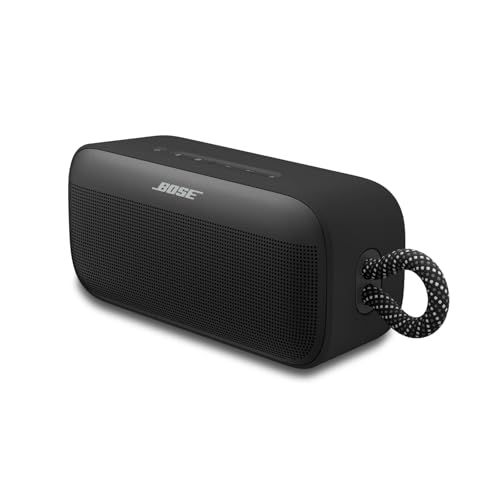What features make the best studio monitors? Among the best speakers on the market, the ideal monitors for music producers start with clear, accurate sound. When it comes to choosing a pair of monitors for recording and mixing, you’ll want truthful and un-embellished audio quality instead of the enhanced and boosted sound you might want in a set of Hi-Fi speakers for an entertainment center.
Next, the best monitors for your studio space should have ample dynamic range to reproduce the full frequency range of your mix. Finally, they will employ multiple crossovers and a multiple drivers setup, along with plenty of acoustic tuning controls to adjust level control and bass response. This makes them a perfect solution if you’re recording demos or more polished mixes to send out from your home recording studio.
Keep reading to learn more about the top studio monitors for recording and music production and how to choose the right stereo monitors for your home or work studio.
Top Studio Monitors
#1 PreSonus Eris E3.5 3.5-inch Near Field Studio Speakers
Award: TOP PICK
WHY WE LIKE IT: They have a premium look and produce very high sound quality. They offer multiple connectivity options and can deliver super low frequencies.
- Great build quality
- Multiple connectivity options
- High sound quality
- Speakers cannot be angled when placed on a desktop
The Presonus Eris E3.5 studio monitors are aimed at professionals who prioritize high sound accuracy, a compact design, and a premium look. They have a solid and sturdy structure and weigh only 6.4 pounds, they are also pretty lightweight. The studio monitors are also built to prevent any overheating, and they also have a soft starting feature that eliminates popping whenever the monitors are powered up. The monitors also offer a wide range of refined tuning options and are capable of a sound pressure level of up to 100 dB. Unfortunately, the speakers cannot be angled when placed on a desktop.
The monitors deliver a frequency response of between 80Hz and 20kHz and offer three connection options that most producers and audio professionals will appreciate. It comes with a rear-panel ¼ TRS connection, an RCA input, and a ⅛ stereo input on the front panel. It also features unbalanced line inputs that can be used with mobile audio devices, and since every monitor boasts a woven composite low-frequency driver, the audio produced sounds a lot more natural. Its sound quality is pretty good because the monitors can deliver super low frequencies and create a wide soundstage.
#2 Edifier R1280T Powered Bookshelf Speakers 2.0 Stereo Active Near Field Studio Speakers
Award: HONORABLE MENTION
WHY WE LIKE IT: They look very good thanks to a premium wooden finish and also feature the bass, treble, and volume dials on the right speaker. Users will also be able to connect to multiple audio devices thanks to dual RCA inputs.
- Premium, wooden finish
- Bass, treble and volume dials on the right speaker
- Comes with a remote
- No Bluetooth connectivity
The Edifier R1280T studio monitors are a pair of premium bookshelf speakers that feature physical knobs for quick bass and treble adjustments and a classic wood finish that gives them a very premium look. The speakers have dual RCA inputs to allow for multiple sound sources to be connected simultaneously and produce a rich, bright, balanced sound signature that is perfect for musicians or record producers. The speaker has a 4-inch woofer underneath the grille for decent bass levels and a 13mm silk dome tweeter that produces accurate high-frequency sounds. Still, some may not appreciate the lack of Bluetooth connectivity.
This set also includes a remote control for convenient functioning, which features a mute, volume up, and volume down button. The speaker also comes with a 3.5mm-to-RCA cable that works with PCs and mobile devices, and its front grill can also be removed if owners see it fit to do so.
#3 Yamaha HS5 Powered Studio Speakers
Award: BEST FOR WALL MOUNTING
WHY WE LIKE IT: They come with mounting points and screws that allow for wall mounting and are available in both black and white. Build quality is also pretty impressive.
- Mounting points and screws for wall mounting
- Great build quality
- Low enclosure design to eliminate unwanted resonance
- No cables included
The Yamaha HS5-powered studio monitor is a 2-way bass-reflex bi-amplified nearfield studio monitor with a 5-inch cone woofer and a 1-inch dome tweeter. The monitors boast newly developed transducers that are capable of a super smooth response and a low resonance enclosure design that eliminates any unwanted resonance for an improved level of sound accuracy. The studio monitors also include mounting points and screws for wall installation and a high-performance AMP unit that ensures each speaker delivers high-quality sound with a super flat response. Unfortunately, it does not come with any cables.
The Yamaha HS5 speakers are ideal for users who want to enjoy a clear and flat sound. Its mids and highs are pretty crisp, and being a Yamaha product, they are of pretty impressive build quality. The studio monitors have a frequency response of 54 Hz to 30kHz, and since both the woofer and tweeter have a dedicated amp, the speakers deliver a flat and clear sound. The speakers also allow for a balanced XLR input and a balanced TRS input.
#4 JBL 305PMKII Professional Studio Speakers
Award: BEST FOR WIDE SOUNDSTAGE
WHY WE LIKE IT: They have been engineered to produce a wide soundstage and have a sound pressure level of up to 108 dB. They can also be used around magnetically sensitive equipment without any issues and produce a satisfying bass level.
- Wide soundstage
- Loud sound pressure level of up to 108 dB
- Decent bass level
- 82-watt power output may be too low for some
The JBL 305P MKII studio monitor is a 5-inch woofer package that does pretty well thanks to its ability to produce a wide soundstage. The speakers have a modern design that will make them stand out in any studio setting and produce a satisfying bass level. They are also of solid build quality and are capable of a frequency response of 49 Hz to 20 kHz. When turned up to the maximum, the speakers can get as loud as 108 dB, making them great for a small studio and sufficient for a medium-sized studio. Unfortunately, some may feel like the speaker’s 82-watt power output might be too low.
In terms of connectivity options, users will be able to choose from either a balanced XLR or a ¼ inch TRS, and as far as build quality is concerned, the speakers feel pretty solid. They produce balanced and detailed sound and have a built-in Equalizer. The speakers have a 5-inch bass driver and a 1-inch tweeter right above it and can also deliver a flat frequency response. They can be used around magnetically sensitive equipment without any issues and have been stress-tested for longevity.
#5 IK Multimedia iLoud Micro Monitors Ultra-Compact 3-inch Studio Speakers
Award: BEST FOR COMPACT SIZE
WHY WE LIKE IT: They are great for music producers who have a pretty small studio, thanks to their compact, space-saving design. They support Bluetooth connectivity and have stands that can be used to angle them on a desktop.
- Compact, space saving design
- Have stands that can be used to angle them on a desktop
- Support Bluetooth connectivity
- Grilles are not removable
The IK Multimedia iLoud Micro Monitors are a pair of ultra-compact speakers with a small footprint and can also be angled on a desktop since they come with desktop stands. The studio monitors each have a 3-inch woofer, a ¾ tweeter, and a front-facing bass port. Its connectivity options are pretty good since they include a stereo RCA and a ⅛ inch TRS stereo input. The studio monitors also support Bluetooth connectivity for wireless audio streaming, but some may not appreciate that the grill on these speakers is not removable. This can make it hard to clean the speakers when they get dirty.
The woofer on this studio monitor looks more like a wool cone, but the sound quality from these speakers is pretty good. The speakers provide a balanced and flat response and clean and sharp highs. The low-ends are also good, and the soundscape also sounds pretty neat and well-balanced. Despite their small size, the build quality is also good, and with a maximum sound pressure level of 104dB, they pack quite a serious punch.
#6 Rockville APM8W 8-inch 2-Way 500W Active/Powered USB Studio Speakers
Award: BEST FOR BASS
WHY WE LIKE IT: It comes with a built-in woofer that produces a lot of bass and a wide range of connectivity options that also include a USB port.
- Excellent bass production
- Wide range of connectivity options
- Has a USB port
- Heavy at 33 pounds
The Rockville APM8W studio monitors come as a pair, and one unique feature that sound enthusiasts will also like about them is that they are bi-amped. This means that both have separate amps for the highs and different amps for the lows. The studio monitors are enclosed in a wooden enclosure, and each of them has a 250-watt peak output. The speakers are available in up to four different color choices, and their build quality is also pretty impressive. Still, some might feel like their 33-pound weight is quite heavy.
The two studio monitors each have an 8-inch low-frequency driver and a 1-inch tweeter unit. They can also get pretty loud, making them great for anyone who would need a set of reliable speakers for use in a large studio. The bass produced is quite deep, and its rubber woofer surrounds ensure that sound quality is pretty high without any distortions. Inside, these studio monitors have thick wadding that improves the clarity of the sound and also protects all the parts that are inside the speaker. Its volume control, bass, and treble are found on the rear of the unit, and since it also comes with a ¼ inch and XLR combo input jack, a USB port, an RCA input, and a 3.5mm headphone input, owners will have a decent variety of connectivity ports to choose from.
Beginner’s Guide to Studio Monitors
What Are Studio Monitors?
Studio monitors are speakers designed for recording and mixing music and other audio. Like mixing headphones, they deliver strong mid-range and low-end responses while preserving the highs. Ideally, they’ll have a very balanced sound profile to ensure artists and producers can hear an accurate representation of how their mix will sound. Most professional monitors use passive speakers designed to work with a powered amp to take the output of a mixing board or recording program.
Studio monitors can belong to either a passive monitor or an active monitor system. An active monitor includes a built-in amp and typically forms part of a smaller home studio setup. Producers, mixers, and engineers can further categorize a studio monitor speaker setup by the size and range of the speakers. Near-field monitors are smaller and designed for up-close listening, while full-range speakers are larger and used mainly in major recording studios. Mid-field monitors are somewhere in-between.
Studio Monitors vs Regular Speakers
Compared to other speakers, studio monitor speakers have different design priorities. Unlike home theater speakers and Hi-Fi systems, which aim to make music and entertainment audio sound better, a studio monitor speaker system aims for accurate and flat frequency response. Quality passive and active studio monitors don’t boost the bass frequencies or digitally optimize sound clarity. Instead, they deliver a clear and accurate picture of what a recording will sound like, letting mixers and producers identify and adjust any flaws in the mix.
| Feature | Studio Monitors | Regular Speakers |
|---|---|---|
| Frequency Response | Flat and neutral, aiming to reproduce sound accurately without coloration | May emphasize certain frequencies for a more pleasing listening experience |
| Bass Boost | Generally avoid boosting bass frequencies | Often boost bass frequencies for a more impactful sound |
| Sound Clarity | Focus on clear and accurate sound reproduction without digital optimization | May use digital optimization to enhance sound clarity and quality |
| Use Case | Professional mixing, mastering, and critical listening in studios | Home entertainment, music listening, movies, and gaming |
| Subwoofers | Some models use separate or built-in subwoofers for low-frequency sounds | Often include subwoofers for enhanced bass, either built-in or separate |
| Amplification | Active monitors have built-in amps; passive monitors use external amps | Typically have built-in amplification, with some high-end models being passive |
| Size and Power | Varies, from small nearfield monitors for small studios to large models for professional settings | Varies widely, designed for various room sizes and listening preferences |
| Advanced Features | May include graphic equalizers, digital signal processing, and acoustic tuning controls | Features vary widely, focusing on connectivity and user-friendly options |
As with other speakers, monitors use an input, a set of drivers, woofers, and tweeters. They may or may not include sub-woofers.
Like regular speakers, monitors come in a wide range of sizes, with different price and power level options. Monitors range from small sets costing about as much as an average tablet or laptop to large, expensive monitors designed with professional recording studios and mastering studios in mind. And, like with surround sound Hi-Fi speakers, monitor speakers interact with room acoustics, meaning appropriate driver size and placement is important to make the most of their acoustic sweet spot for top sound quality.
How Studio Monitors Work
Studio monitors take input from a mixing board or other recording studio equipment and produce sound waves with neutral frequency response. Accurately reproducing the levels of a mix helps with critical listening, so a good studio speaker monitor set will emphasize this flat response, letting mixers identify any weak spots in the recording or mixing.
Some monitors use separate subwoofers matched to the main drivers, while others use built-in subs for a more compact design. Nearfield monitors for smaller studios use smaller drivers so that the “sweet spot” or ideal listening distance can be within the room. Monitors too large for a given acoustic space will generally make a boomy, echoing sound that reduces clarity compared to a well-designed nearfield monitor.
Passive high-end stereo speakers use an external amplifier, while active speaker monitors incorporate a built-in amp. Active systems appear on budget models more often, with professional studio audio monitors generally employing external amps. Some studio monitor sets include features like graphic equalizers and digital signal processing, helping with setup and speaker placement.
Professional and enthusiast models often employ multiple crossover points to improve transient response, preserve crucial mid-range sounds, and boost high-end transparency. Features like silk ribbon tweeters, cone woofers, and class-AB amplifiers can help precise imaging across the frequency spectrum, which is especially important for vocal producers and electronic music artists.
Why Should You Buy New Studio Monitors?
A quality studio monitor setup is an essential piece of audio equipment for any professional or home recording studio. Monitor speakers can offer improved clarity for critical listening and mixing, letting artists and producers hear every detail of a mix before sending it off for mastering.
Whether you’re a “bedroom producer” or work in a studio, a new set of monitors can be an excellent choice if you’re looking to perfect your mixes and save time in checking levels and audio balance. Monitors deliver more detailed imaging and more faithful, flat sound than consumer audio speakers, making them useful pieces of equipment for professional mixers and engineers.
Upgrading to studio monitors can also mean you won’t have to spend as much time with your mixing headphones on, which can help prevent ear fatigue and loss of hearing sensitivity. Small near-field monitors are a popular choice for mixers and electronic music artists looking for a more comfortable alternative to headphones.
Newer studio monitor speaker systems offer easier setup procedures and more advanced features, such as acoustic tuning controls, graphic equalizers, and multiple connectivity options. Some popular models now feature smartphone apps that help with speaker placement and testing.
New monitors may also offer a wider sweet spot and more sophisticated room tuning options, including digital signal analysis. The newest versions of proven monitors, such as the PreSonus Eris and Neumann KH, offer improved quality throughout the frequency range.
More diverse budget options are available, ranging from 2-way studio monitors available at an affordable price to larger monitor options for full-size recording studios.
Are Studio Monitors Worth Buying?
- Reduce Ear Fatigue: Studio audio monitors can reduce ear fatigue compared to using headphones all the time. Experts recommend limiting the volume and duration of headphones use to avoid tinnitus and loss of hearing sensitivity.
- New Studio Space: A new studio can be a great excuse to invest in audio equipment, especially since monitor setup and placement are very specific to room acoustics and size. Upgrading to a larger studio space may mean you’ll want monitors with a higher power rating, or that you might want to invest in a set of midfield monitor speakers with ribbon-style 1-inch tweeters.
- Remodeling Home Recording Studio: Even if you’re not moving to a new studio space, remodeling or acoustic treatment may mean you’ll want a new monitor setup.
- More Accurate Mixing: Even cheap studio monitors will help you produce better quality recordings than relying on regular speakers. A good monitor setup with an extended frequency response lets you hear every nuance and spot errors in mixing and layering, helping identify the need to add or take out reverb, for example, and helping ensure that vocal tracks have the right levels.
Why Studio Monitors May Not Be for You
- You Don’t Have an Acoustically-Treated Space: While the pro studio and multimedia monitors perform best in spaces with acoustic treatment and specific positions relative to the listener, modern small micro monitors can still be a great alternative to mixing headphones.
- Using Mixing Headphones: Some home studio users and independent producers may also feel that mixing headphones are more than adequate for critiquing a recording. However, monitors may provide a wider soundstage and improved clarity, along with reduced ear fatigue.
- Concerns About Setting Up: The process of setting up even a 2-way system can seem daunting, but modern studio monitor speakers often provide helpful setup features like signal analysis, digital room tuning or acoustic space control, and multiple connectivity options.
How Long Do Studio Monitors Last?
As with other professional audio equipment and high-end home speakers, studio monitor speaker sets can last over ten years if properly taken care of. The basic components, including sound drivers, tweeters, bass ports, and speaker surrounds, tend to be relatively durable. On older speakers, the input jacks often show wear and tear. Foam elements and paper cone woofer membranes can become brittle and lose their integrity over time as well.
Monitor speaker lifespan can vary depending on the type of driver, the size, and the number of electronics involved, in addition to the overall material and construction quality. Passive monitors generally last longer than powered studio monitor units.
Experts suggest careful mounting and placement help your monitors last as long as possible. Avoid exposing speakers to extreme heat or high humidity levels, and if storing them, store them somewhere cool, dry, and secure from rodents and termites.
How to Choose Studio Monitors
Various factors can help you decide on the best studio monitor speakers to help you double-check your mixes and create better-sounding recordings. You’ll likely want to consider the size of your studio, the type of audio equipment in your setup if you already use a soundboard or mixing board, and your personal preferences for user interface and audio controls. You might also want to choose based on the type of music you record. For example, some dance and electronic music producers may want models optimized for bass-heavy music.
Best Studio Monitor Key Factors
1. How Large Is Your Studio?
The size of your studio space is one of the most important factors determining what monitor setup works best. Monitors are very sensitive to room size and speaker placement. With a set of 2-way monitors, the listening sweet spot for faithful, flat frequency response tends to be where the listener forms the third vertex of an equilateral triangle with the two monitors. Proper distance is also important — if the speakers are too small, they’ll require you to sit very close and may not take advantage of the acoustics in a large studio. Using speakers too large for a given space also results in lower-quality playback. A set of midfield monitors, each with a 5-inch woofer, will sound boomy and overwhelming in a smaller home studio.
2. Are You Recording Demos or Professional Mixes?
Recording quality depends on an entire suite of audio equipment and acoustic design, but if you’re recording tracks for someone else to mix and master in their own studio, then compact size budget models or micro monitors may work well. However, if you’re mixing a song to be released, you might want more dedicated studio audio monitors.
3. What Type of Music Do You Generally Produce?
Based on their sound stage and frequency response characteristics, some models work better for particular music genres and recording styles. For example, bass-heavy music may call for monitors with built-in subs for a great low-frequency response.
4. What Input Devices Do You Use?
Depending on your input sources, some monitor types can be easier to set up than others. If you aren’t already using an external amp, you might find it more convenient to go with a powered studio monitor pair. On the other hand, a passive monitor setup may have advantages if you already have the rest of the equipment necessary to run it.















